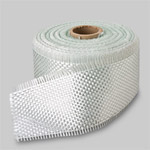 |
Steel ConstructionSteel Construction vessels work well with Ultrasonic Antifouling. Ultrasonic transference into the hull is very effective given the density of the material. |
||
 |
Aluminium ConstructionAluminium construction lends itself very well to Ultrasonic Antifouling. Ultrasound signal travels very fast and well through Aluminium. |
||
 |
GRP Glass Re-enforced Fiber ConstructionThe most popular pleasure craft construction material works well with Ultrasonic Antifouling. Fiber Glass has a very dense and hard final construction which allows transference of the Ultrasonic signal. |
||
Zero Detrimental Effect
There is zero detrimental effect to any type of hull construction or vessel. Ultrasonic Antifouling transducers are not capable of causing any damage, Ultrasound is very safe. Ultrasonic Transducers also are incapable of causing Electrolysis.
Considerations
Foam Core Fiber Glass Construction
Consideration should be given to vessels with Foam or Balsa Core GRP. The nature of Ultrasonic Antifouling requires that the Ultrasonic signal needs to be passing through the outer layer of the hull, IE if there is an inner centre of foam the Ultrasonic signal will not successfully reach the outer layer. The way to rectify this issue is to place the Transducer(s) in a location where both the outboard and inboard layers of GRP are bonded together. As this is usually done in only a few locations it may be necessary, for correct transducer location, to have a shipwright route out a small section of the inboard layer then prepare and fibreglass the inboard layer to the outboard layer in that location to restore the strength and seal the foam core. After this the transducer can be installed as per normal into this location.
Wood & Ferro Cement Hulls
Ultrasonic Antifouling will not work on Wooden or Ferro Cement Vessel construction, both of these construction methods to not have the density to support consistent throughput of Ultrasonic signal.
Antifoul Coatings
Ultrasonic Antifouling is what we like to refer to as an Extender of the existing Anti Fouling Coating when used on Hull’s. While Ultrasonic Antifouling is Very effective it is necessary to have Antifoul Coatings on your hull. For three main reasons;
- Antifoul Coatings when properly applied utilise epoxy primers that provide a waterproofing membrane for the vessel.
- The nature of an Electronic Antifouling device such as Ultrasonic Antifouling requires a consistent power supply to ensure protection, should there be an intermittent outage or similar the Antifoul Coating will be there to provide some protection until a power state is restored.
- Ultrasonic Antifouling is most effective as an extender, typically extending the life of existing Anti Fouling by 3 times or more it’s expected life.
Alternative Ultrasonic Brands
Like with most things product brand is important. It is impossible to consider all Ultrasonic Antifouling systems equal as they will not all provide the same results. There are many solutions available on the market and they are not all born equal; many under specify, utilise inferior technology and provide poor quality electronics. CleanAHull™ Ultrasonic Antifouling has been a world leader for over 6 years in the industry, steadily growing, learning and adapting our technology to the market and in this time we have seen many brands try and fail with varying levels of exposure while we continue to obtain great results and happy customers. When considering your brand, be careful to ensure you consider all advise carefully. We often specify more transducers than other brands, even though our system is the most powerful available, because from our experience the results are improved and we always like to ensure the best results for our customers.
